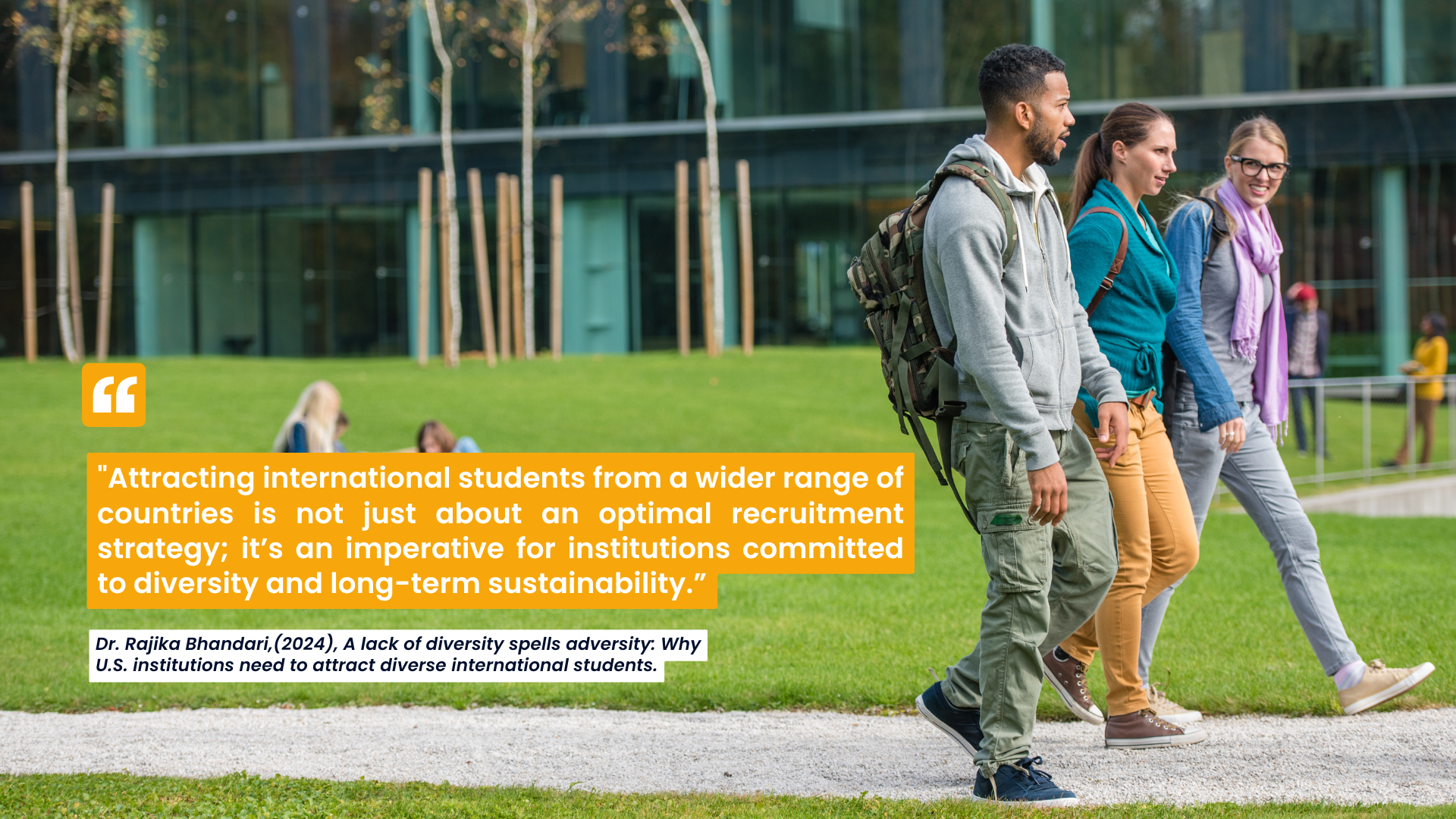How can the U.S. attract and retain international students on its campuses?
The challenge of attracting and retaining international students has never been greater for U.S. institutions. As global competition intensifies from countries like Canada, Australia, and European nations, and the effects of the pandemic reshape student mobility, more than traditional recruitment methods are needed. For U.S. institutions to stay competitive, they must focus not just on […]

The challenge of attracting and retaining international students has never been greater for U.S. institutions. As global competition intensifies from countries like Canada, Australia, and European nations, and the effects of the pandemic reshape student mobility, more than traditional recruitment methods are needed.
For U.S. institutions to stay competitive, they must focus not just on enrollments but on creating an environment where international students can thrive academically, socially, and culturally.
Understand The Market
U.S. universities must adapt to the evolving motivations of international students, as outdated recruitment strategies no longer work. Instead, universities need to rely on data to identify why students choose to study abroad, what challenges they face, and how their needs are changing.
“Institutions that regularly engage with their international students, collecting and analysing feedback at every stage of their journey, are in a much better position to adapt to global trends,” says Dr Rajika Bhandari, expert in international student mobility, author of ‘A lack of diversity spells adversity: The imperative for U.S. campuses to diversify their international student population’, OIEG’s latest whitepaper.
Rather than assuming that all students are motivated by the same factors, universities should segment their approach, offering targeted support and marketing that speaks directly to the unique needs of students from different regions.
Admissions Processes: Clear, Simple, and Inclusive
For international students, navigating U.S. university admissions can be challenging, particularly when admissions processes are primarily designed with domestic students in mind. Simplifying these processes and making them more inclusive can go a long way in attracting a diverse range of applicants.
According to a 2023 report by NAFSA: Association of International Educators, 37% of prospective international students see visa and immigration processes as the most challenging part of studying in the U.S., highlighting the need for transparent, supportive admissions processes to attract and retain top talent.
“Attracting international students from a wider range of countries is not just about an optimal recruitment strategy. It’s also imperative if institutions are committed to issues of access and equity and increasing educational opportunities for a broader range of students,” notes Dr Rajika.
Support Throughout the Journey
Institutions can avoid higher dropout rates among international students with ongoing support beyond admissions. From pre-arrival preparation to post-graduation support, every touchpoint matters.
According to an Institute of International Education (IIE) survey, 42% of international students felt underprepared for non-academic U.S. university life, such as housing, health insurance, and banking. This is an area where U.S. institutions have room to improve by offering robust, practical guidance that supports students as they transition to life in a new country.
“Attracting international students from a wider range of countries is more than just about an optimal recruitment strategy. It’s also imperative if institutions are committed to issues of access and equity,” notes Dr Rajika Bhandari.
In this context, partnerships with local service providers, such as housing agencies and banks, offer a straightforward way for universities to streamline the arrival process and reduce the administrative burden on international students. Jill Blondin, Associate Vice Provost for Global Initiatives at Virginia Commonwealth University, adds that “diversifying the international student population at your institution is good practice, not only for your recruitment strategy and for sustainability, but to maximise opportunities for students from all over the world.”
Cultural Integration
Research from the British Council highlights that 30% of international students worldwide experience some form of culture shock while studying abroad, which can significantly impact their mental well-being and academic performance.
Many universities have seen success by connecting incoming students with current international students through peer-led mentorship programmes, allowing new students to get practical advice on everything from academic expectations to social norms.
Virginia Commonwealth University (VCU) implemented peer-led mentorship programmes and saw improved international student retention by connecting incoming students with current international students, providing practical advice on academic expectations and local customs, and making the transition smoother.
As Dr Rajika Bhandari notes, “Ensuring the sustainability of international students is a strategic move to create a financially resilient institution.”
Conclusion
Offering quality education alone is no longer enough. Institutions must integrate data-driven recruitment strategies with streamlined admissions and support throughout the student journey to remain competitive.
Download the latest report to deep dive into more insights about international student recruitment and retention.
Register for our upcoming webinar with Dr Rajika Bhandari on 29th October, 2024, at 10:00 AM EST / 2:00 PM GMT https://lnkd.in/eqPUq4YG
Download the report: https://lnkd.in/eHg5zGQ3
